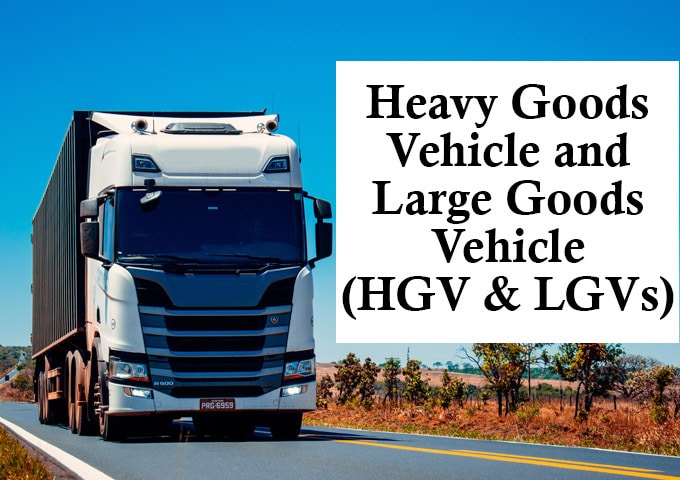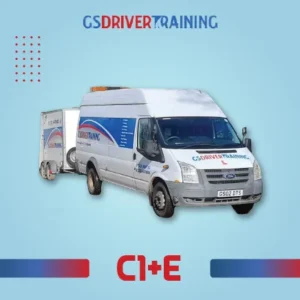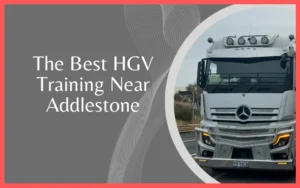What is the Difference between HGV and LGV
With the cargo enterprise roaring like thunder today, authorized bus, van, and truck drivers are in tremendous demand. If you are aspiring to become a trucker, you might be puzzled by all the permit specifications. You may have clearly extended towards the terms LGV or HGV, and you might be questioning what they imply. In the present time, these terms are employed by many conversely and this has driven a great amount of complication in understanding both terms precisely.
The latest drivers considering to begin their jobs are taken aback, striving to understand what every one of the term. What is the exact difference between HGV and LGV? Now we’re here to describe. Is there any difference between both terms or are HGV & LGV the same? Including how to determine the appropriate license for your prospective career and what is suitable for an individual.
Heavy Goods Vehicle and Large Goods Vehicle (HGV & LGVs)
Beginner drivers looking to enter the transport and logistics industry must understand the confusing terminologies. During your job search, you’ll come across LGV and HGV terminologies. Often, you may get confused to the extent of not being sure of the type of license you need to get the job. Let’s take you back in the time of commercial vehicle haulage. At the time, only LGV vehicles were on the road.
The terminology represented two types of vehicles which were pretty confusing at the time. When most people heard of LGV, it meant:
Light Goods Vehicle: These were commercial vehicles weighing below 3.5 tonnes. They included vans, pick-up trucks. Even more, any driver with a standard driving license could drive these vehicles. You didn’t have to undergo any special training.
Large Goods Vehicle: Large Goods vehicle, which we now refer to as HGV(Heavy Goods Vehicle), is a term people use to identify vehicles weighing more than 3.5 tonnes. These vehicles included curtain side lorries, tippers, drop sides, box vans, flatbed lorries, and more. Unlike the Light Goods Vehicle, you have to undergo special training to operate a Heavy Goods Vehicle.
These terminologies were pretty confusing, Weight played a key role in identifying these vehicles. Therefore, the larger vehicles were known as heavy goods vehicles, making it much easier to differentiate. Ever since people have used this term frequently, and it has become the norm. If you are thinking of getting an HGV or LGV permit there are just several requirements you need to fulfill. The initial step is to have a full-time UK permit.
Following that the applicant should be of 18 years or above. Then the ultimate move is to clear a medical and theory examination and attend the practical learning program. HGV term suggests Heavy Goods vehicles, while LGV means Large Goods Vehicles. Supporting the UK and European regulation, both LGV and HGV permits are similar in a way. Both of these terms comprise industrial trucks with a total tonnage of 3500 kgs or above.
This can cover fridge Lorries, tippers trucks, drop sides trucks, and various others. Even though they may include identical tools and be utilized in similar means, there exist some sharp differences between HGV and LGV authorization. Now that you are knowledgeable of HGV and LGV differences. Cat C class is the foremost license that you should be contemplating acquiring. This permit can be utilized for many varied reasons from an expert trucker running tippers trucks, drop side trucks, or flatbeds to individual users for a cube truck.
What You Need to Know About LGVs: Definition and Overview
LGV is the initial abbreviation – the expression that was applied to define all the permits, classes, and types of vehicles. Particularly, there are two varieties of carriers that come under the LGV term. The primary is ‘Light Goods vehicles’, and applies to any industrial carrier means that measure below 3.5 weights. This incorporates tools like trailers, pick-up trucks, and even three-wheeled industrial trailers.
The biggest advantage is that the conventional driving permit will include the practice of these carriers in Category B, so you are not required to register for an exceptional exam to run them. The secondary type is ‘Large Goods vehicles’, which includes what we would further commonly recognize as an HGV i.e, “Heavy Goods Vehicle”. LGV, here, relates to any transportation with a whole mass of above 3.5 weights and covers devices like flatbed trucks, air-cool trucks, drapery side lorries, box trailers, drop sides, tippers, etc. Considering the difference between HGV and LGV wheels, it is not necessary to hold a distinct permit to run them.
That involves proceeding through training taking several ranges of examinations prepared for your individual preference of vehicle.
What is an HGV?
So the new term is HGV. The difference between HGV and LGV is the same yet distinctive. But it’s quite clear now that the term HGV was devised for a different direction. When road tax was bought upon earlier, the administration divided vehicles into separate categories to compose them more manageable to levy.
They placed all of the ‘light industrial goods’ vehicles into one section and gave a modest ‘LGV’ symbol on their tax plate to determine what section they were spending in. But this created a complex situation like where would the heavier industrial vehicles operate? They required a distinct section since all the sections were defined by the vehicle’s frame, generator, and measurement, kind of oil and radiations, and the purpose the carrier was or to be run for.
Clearly, they couldn’t apply the title ‘LGV’ for these transportations as well. So they exercised the main distribution contrast (i.e, the weight/measurement of the vehicle and described this class as ‘Heavy Goods Vehicles’. So the term HGV originated from vehicle levy laws but has considerably expanded because it determines people the difference between LGVs and HGVs. So we can say that HGV and LGV are the same but still differentiated.
The Licence Classes
When it proceeds to permits, there are a few fundamental difference between HGV and LGV. Considering there are different classes of industrial transports that can scale 3.5 tonnes or above that, licensing allows generated different classes to examine the expertise of drivers. One can solely operate certain models of transport if they possess a legally authorized permit for it, indicating that drivers are required to select early. We’ve drawn all of the levels and pitched them hereinafter for your ease:
C1 Entitlement
Earlier, there was an HGV Class 3 permit obtainable, which is the nearest subject to an LGV C1. Accommodating C1 title authorizes any driver who owns this permit to run transportations that are above 3.5 tonnes and that measure up to 7.5 tonnes. If you intend to operate a limited-sized transport, as an EMT van, this permit can be beneficial to you. Many domestic and regional dispatch trucks need a C1 permit.
If you are looking to run professionally, you should regard updating from a regular car permit to LGV C so that you are also resilient in what transportation you can handle on the field. It will equip you to manage any stiff transportation of up to 32 weights. Even following the excessive training, a majority of drivers will instantly shift over to LGV C+E so that they will be accredited to run transports with vans of up to 44 weights. Anyone who has cleared their driver’s examination before the year 1997 certainly acquires a C1 permit as well, so it’s necessary to keep a check if it pertains to you as well.
C
A category C permit enables drivers to operate vehicles above 3.5 tonnes, but shouldn’t pass 32 weights. Class C or also known as Class 2 permissions usually narrate a vehicle with a cab and container fastened collectively. In another language, also termed as a conventional truck While you have this permit your transport load must not top 750kg. This permit is a stepping level within HGV practice – a means to proceed on to the class C and E permits. This is the level where HGV & LGV differentiates. You must be 18 or above to gain this permit.
C + E
A class C + E permit is the most comprehensive HGV permit you can handle. With this permit, drivers can run and manage a drawbar or connected transportation. The E section of class C and E permit attain authorization and indicate that the carrier can work up to or above 750kg. This specific permit is also identified as Class 1, enabling the driver to operate any large goods vehicle, with a double trailer.
Final Words:
As the GS Driving School, driving logistics instructing demonstrator, we glory ourselves in assisting you to accomplish your training ends, whether that be reappearing in the workforce, development or progression in your profession, or a total newcomer. We have the most extensive variety of courses fitting your level of skill.
If you are still uncertain about the difference between HGV & LGV or in this case, the similarities between HGV & LGV or necessitate some advice on which program is appropriate for you, get in touch with our specialist team and we will be qualified to assist you. We at GS Driver Training provide professional HGV Driver Training at the best price.








